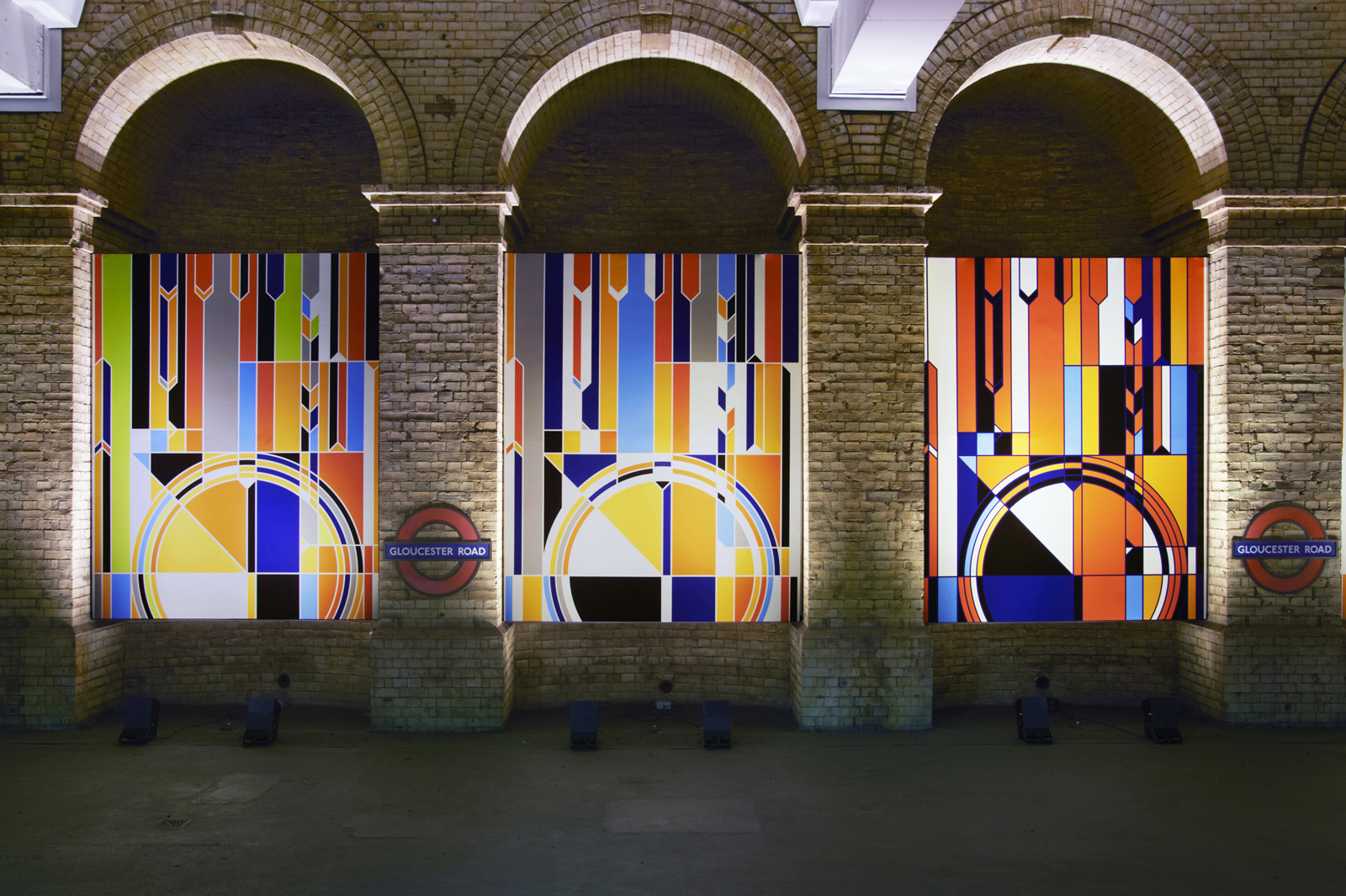Sarah Morris
Big Ben [2012]
Big Ben [2012] was a site-specific response to the architecture of Gloucester Road station and to the city of London. Spanning eighteen arches across the entire length of the disused platform there, this work was a dynamic and evolving spectrum of colour and geometry inviting the viewer to reflect upon both London’s past and its future.
This multi-part work was developed by Sarah Morris from her painting of the same title, which was created for an official London 2012 Paralympic poster. Using the structure of Big Ben as a point of departure, she references this London architectural icon and its history, ironically with an anti-authoritarian slant: no-one can control the politics of the future, the work suggests. Time and movement are also explored, concepts that become all the more poignant in the context of the Underground as well as the London 2012 Olympic and Paralympic Games.
Big Ben [2012] is a streamlined image of time and the production of a painting. Morris strips the image bare, playing with colour within a sequence of compositions and creating the image through a build-up of fragments. This progression not only recalls the countdown to a spectacle or event, but also parallels the way in which a train pulls in and out of the station.
Since the mid-1990s, Morris has been making complex abstractions in both painting and film. This is the first time that she has produced a work taking London as its subject. Her paintings can be described as portraits of cities, referencing their psychology, architectural motifs and geography. Observations into a given city’s ‘cultural, commercial and political configurations’ result in a new self-referential system and a unique colour palette, which work counter to the contemporary notion of the homogenised global metropolis. The idea of travel and the commuter, public pathways and their corresponding diagrams throughout the city are also sources of ongoing fascination for Morris, as demonstrated in her films, with subway stations featuring in works such as Midtown (1998), Beijing (2008) and Chicago (2011).
Big Ben [2012] is equivalent to the scenario for a virtual film. A backdrop to real life, the work engages with Morris’s conception of the city as a constellation of non-linear narratives. ‘It is in these transient spaces that you can see the stories of the inhabitants of a particular city, a veritable stage where people congregate, en route to their next destination.’
About the artist
Sarah Morris (born 1967 in Sevenoaks, England) is an American artist. She lives in New York City in the United States.
Since the mid-1990s, Sarah Morris has been making abstract paintings and films to investigate what she describes as “urban, social and bureaucratic typologies”. These works, based on different cities, are derived from close inspection of architectural details combined with a critical sensitivity to the psychology of a city and its key protagonists.
Morris began her career making graphic paintings that adapted the dramatic, emotive language used in newspaper and advertising tag lines. Her city-based paintings are executed in household gloss paint on square canvases, employing rigorous, all-over grids that reference architectural motifs, signs or urban vistas. Their vivid colours derive from each city’s unique vocabulary and palette, but, most importantly, its dynamic. In her film work, Morris both seduces and alienates the viewer, employing different kinds of cinematography, from documentary recording to seemingly set-up narrative scenarios. In her film Los Angeles (2005), for instance, Morris explores an industry fuelled by fantasy and examines the trenchant relationship between studio, producer, director and talent. In Capital, part of Morris’ series about Washington DC, Morris gained unprecedented access to the inside workings of Clinton’s last days in office.
Commissioned by Art on the Underground

Photo: Thierry Bal

Photo: Thierry Bal

Photo: Thierry Bal

Photo: Thierry Bal
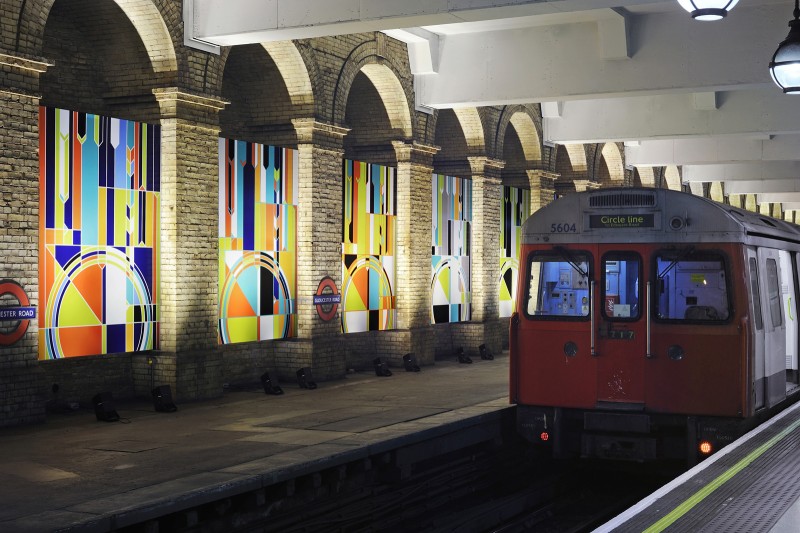
Photo: Thierry Bal
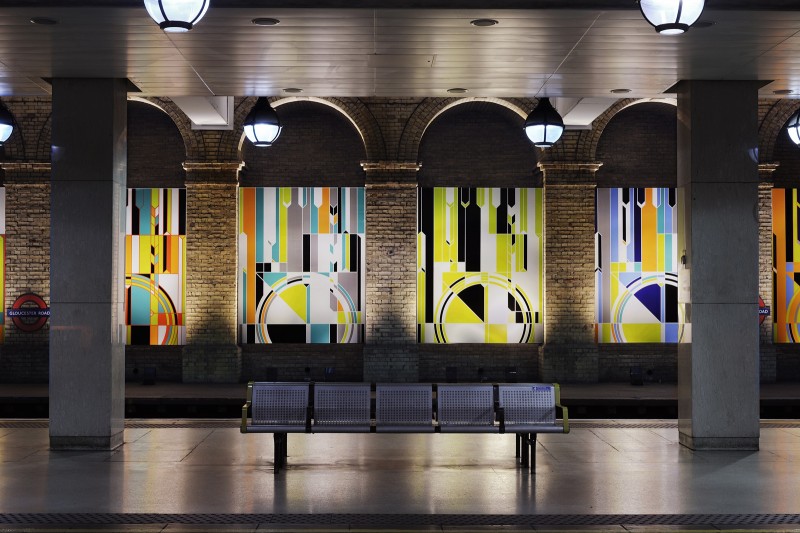
Photo: Thierry Bal
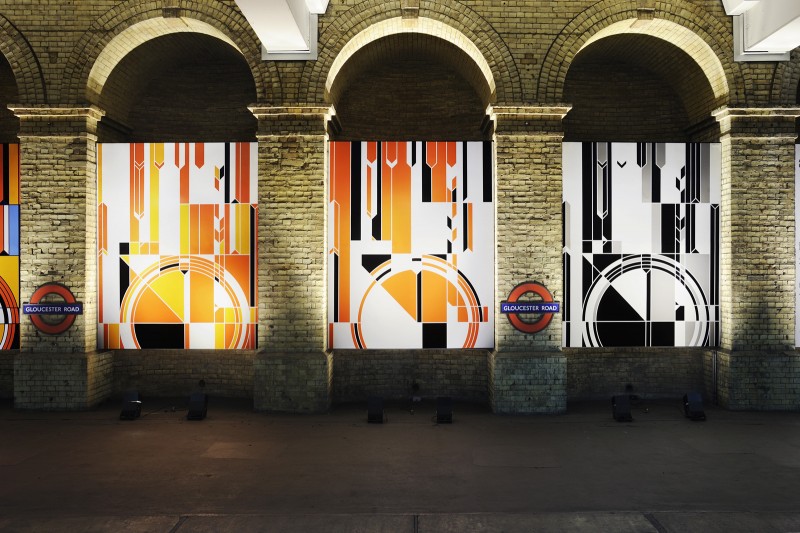
Photo: Thierry Bal
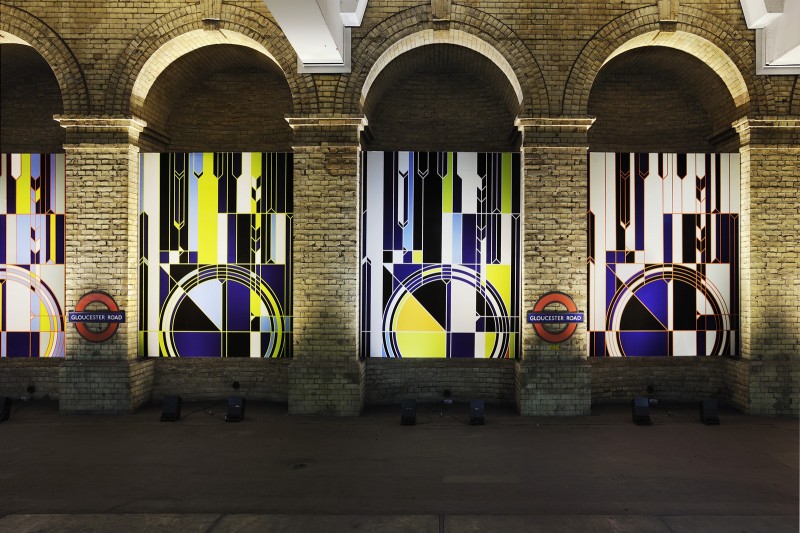
Photo: Thierry Bal
